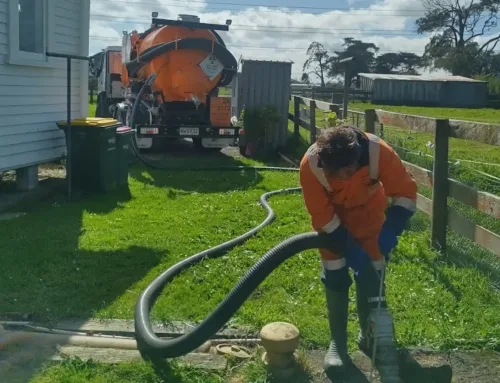Some Known Questions About Reclaim Waste.
Some Known Questions About Reclaim Waste.
Blog Article
Little Known Facts About Reclaim Waste.
Table of ContentsSome Known Details About Reclaim Waste 5 Easy Facts About Reclaim Waste ShownThe Reclaim Waste IdeasReclaim Waste for DummiesAn Unbiased View of Reclaim Waste
Domestic sewer waste refers to the waste and items from a residential septic storage tank. The proper management and disposal of residential sewage waste call for fluid waste to be moved to a sewer treatment plant where the proper approaches and devices are applied to cleanse and dispose of waste.
Commercial waste often consists of possible risks, such as flammable materials or a mixture of fluid and strong waste products, and needs a more innovative and in-depth disposal procedure. The disposal of industrial waste normally involves the purification of waste prior to transportation to ensure secure and proper disposal. Industrial waste is developed from byproducts and overflow of industrial processes and production.
This sort of waste can not use the exact same sewer monitoring transport or procedures as septic or industrial fluids. The industrial waste administration process needs the inspection and testing of liquid waste before it goes through the disposal process (liquid waste disposal melbourne). Drainage waste is the fluid waste that originates from runoff and excess stormwater in extremely populated locations or cities
Drainage waste can trigger contamination and flooding otherwise dealt with correctly. Discover more about sewer cleansing and waste monitoring. Making sure appropriate waste administration can avoid disasters and minimize environmental harm. Both individuals in domestic setups and experts in commercial or manufacturing sectors can gain from recognizing the processes and laws of liquid waste management.
Reclaim Waste - Truths
Get in touch with PROS Services today to find out about our waste management and disposal services and the correct methods to take care of the fluid waste you create.
(http://www.askmap.net/location/7161699/australia/reclaim-waste)Do you understand what occurs to your water when you end, purge the commode or drain pipes the washing equipment? No? Well, it's worth understanding. This supposed 'wastewater' is not just a crucial resource however, after therapy, will certainly be released to our land, waterways or the ocean. Made use of water from commodes, showers, bathrooms, kitchen sinks, laundries and commercial procedures is referred to as wastewater.

water made use of to cool machinery or clean plant and tools). Stormwater, a form of wastewater, is runoff that streams from farming and city locations such as roofings, parks, yards, roadways, paths and gutters into stormwater drains, after rainfall. Stormwater flows unattended straight to local creeks or rivers, eventually getting to the ocean.
Reclaim Waste - The Facts
In Queensland, a lot of wastewater is treated at sewage treatment plants. Wastewater is carried from domestic or industrial sites with a system of sewers and pump stations, recognized as sewerage reticulation, to a sewage treatment plant.
The Division of Natural Resources recommends city governments concerning managing, operating and keeping sewage systems and treatment plants. In unsewered locations, local governments may need householders to mount specific or household sewage treatment systems to deal with residential wastewater from bathrooms, kitchens, washrooms and laundries. The Department of Natural Resources authorises making use of house systems when they are confirmed to be effective.
Many stormwater gets no treatment. In some new neighborhoods, therapy of have a peek at this website some stormwater to get rid of trash, sand and crushed rock has actually begun using gross contaminant traps. Wastewater therapy happens in 4 phases: Eliminates solid issue. Bigger solids, such as plastics and various other things wrongly released to sewage systems, are eliminated when wastewater is gone through displays.
Wastewater after that streams right into huge containers where solids resolve and are gotten rid of as sludge. Oil and residue are skimmed from the surface area. Utilizes little living microorganisms called micro-organisms to break down and remove continuing to be liquified wastes and great particles. Micro-organisms and wastes are incorporated in the sludge. Removes nitrogen and phosphorus nutrients that could create algal blossoms in our rivers and endanger marine life.
Reclaim Waste - The Facts
Nutrient elimination is not readily available in any way sewage treatment plants since it calls for costly specialized devices. It is ending up being more typical in Queensland. Clear fluid effluent created after therapy might still contain disease-causing micro-organisms. If this effluent is released right into rivers such as rivers or the sea, the micro-organisms will eventually die out.

A lot of wastewater streams right into the sewerage system. Under the Act, local federal governments carry out approvals and permits for eco appropriate activities (ERAs) including wastewater releases that could have a local influence.
The Facts About Reclaim Waste Revealed
Otherwise, examples are taken for laboratory evaluation. Usually several tests are required to establish the levels of each of the different contaminants such as oils, hefty metals and pesticides in water. Monitoring supplies factual information regarding water top quality and can verify that licence problems are being fulfilled. The details obtained with surveillance gives the basis for making water quality choices.
Report this page